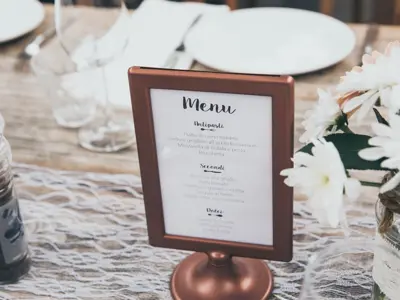
Running a restaurant that is a financial success relies heavily on effective advertising and public relations strategies. A good restaurant marketing strategy should focus on attracting customers and getting them to order large quantities of food once they are inside the establishment. These are the two primary components of a successful marketing campaign for your restaurant.
Designing a menu might almost be considered an exact science. Some research indicates what people glance at when they browse through menus and how to organize and design your structure to achieve optimal outcomes.
Even though consumers may not notice a menu as the first thing they see when they enter your restaurant, it is a highly effective means of conveying information about the food you serve to them. The menu is a good place to start if you want your customers to know what to expect from their dining experience.
One of the most important aspects of any restaurant menu is its ability to communicate the food's cost-effectively. It's best to avoid too complicated menus, cluttered layouts, and needless visuals.
Items on the menu should correspond to the concept of your restaurant. It's critical to maintain your restaurant's menu up to date to stay abreast of changes in food prices and trends. Let's look at some tips on how people can create an attractive menu.
1. Typography
First and foremost, "typography" is one of the most important components of a successful menu design. One of the most critical aspects of a well-done menu design is typography. There should be a defined hierarchy so that customers can distinguish between the many options and pricing. It's very effective when the menu includes a unique layout or additional components like illustrations or tactile textures.
Typography is an effective means of communicating your brand's identity straightforwardly. It's also important not to forget about the size of the font. Small font sizes can polarize the guests. Although many designers enjoy negative space, restaurants are generally dim, and customers don't want to wear their glasses or use a smartphone to view the menu.
2. Don't Include The "$" Sign
A Cornell University study indicated that a single modification could considerably raise the money customers are ready to spend. The customers will be more focused on the quality of the cuisine if you remove the dollar symbols from the menu. The prices of your items on the menu should still be included, but they should be listed as basic numbers without the use of a currency sign.
This approach emphasizes the overall customer experience while also increasing your profit margins. When people want to have a good time, unwind, and enjoy themselves, they go out to eat. No one wants to think about how much money they're spending or whether or not they can justify ordering one more appetizer.
Transparency, on the other hand, is essential. Instead of hammering home the price tag, subtly promote your cuisine.
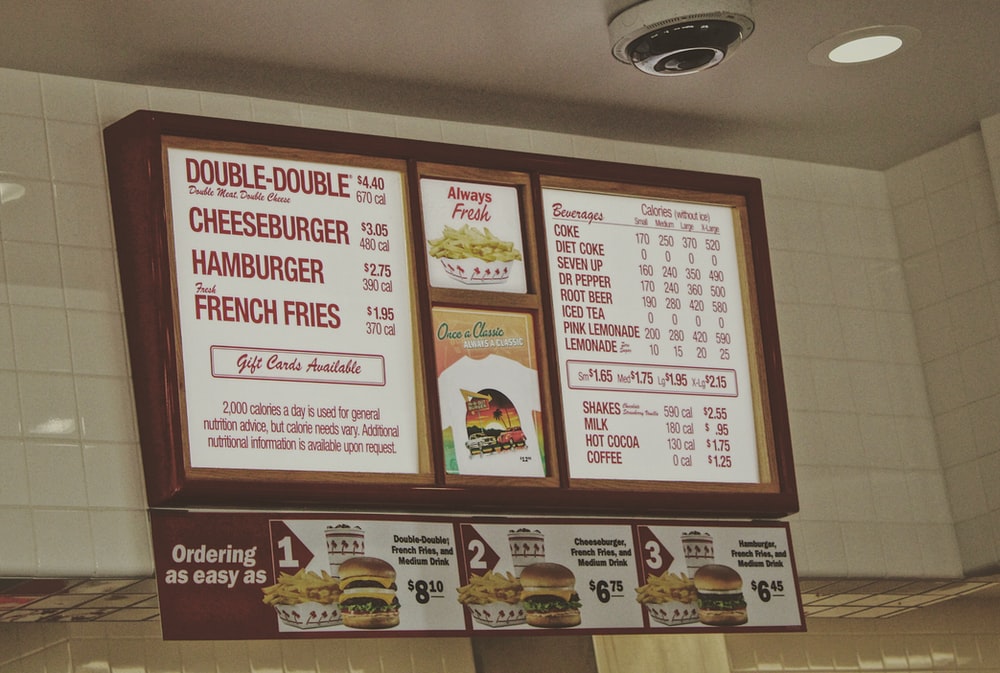 ??Old fashion burger menu
??Old fashion burger menu
3. Menu Size
In reality, most individuals don't desire a plethora of choices. As a result, they may suffer from "analytical paralysis," which might cause guests to be unsure about what to order. Customers will feel more welcome at your restaurant if the menu isn't overly long and complicated.
Your menu should be visually paced and laid out in a way to ensure that customers can easily go through it without feeling swamped by the options. Typically, the restaurant's size will define how vast your menu is—the greater the kitchen's capacity, the greater the variety of dishes that can be prepared.
You can run into major challenges during the lunch and dinner rushes if you try to serve a vast and sophisticated menu out of a small kitchen area. Your restaurant's kitchen should occupy 15% to 25% of the overall square footage. If it's any smaller, you run the danger of being unable to serve as much throughout a shift.
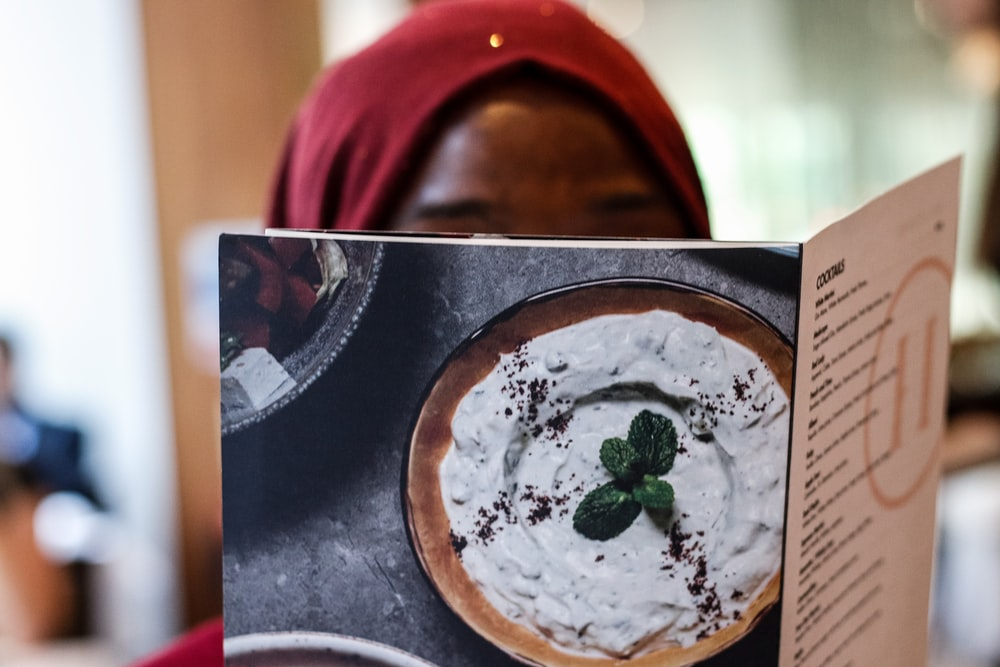 ??Women peeking at the menu
??Women peeking at the menu
4. Keep Your Competition In Consideration
Based on the size of your town or city, a customer's decision could come down to between your restaurant on one side and another restaurant on the other end. Most diners pick a restaurant that is located close to their homes. Therefore, knowing what other restaurants are near to yours are doing can be a useful starting point for your restaurant's menu planning.
Take a few minutes to look over the menus of the other restaurants in your area. You want people to come into your restaurant, not the other places. Consider the cost, the theme, and the food. Become familiar with the times of the year when they usually provide the best deals. Create a menu that competes with theirs, and you'll have a leg up. Offer something they don't have.
5. Understand Consumer Psychology
When it comes to menus, eaters seem to demonstrate a few typical traits. Your most costly and best-quality meal will get their attention first, but they'll quickly shift their attention to something you've featured directly beneath it, possibly to a food item they can more comfortably buy. This is a fantastic spot to add a food product that you wish to market, perhaps one that can drive your sales.
Diners rarely look at the back of a menu. Don't put the dishes you wish to push in a place where nobody will see them. The colors you chose for your menu speak volumes about the business and its identity, so make sure you do your research before printing your menu. Make a point of selecting those proved in research to have particular psychological effects.
Your consumers' appetites can be stoked by using bright colors such as reds, yellows, and oranges. However, dark colors such as blue and purple can deter your consumers from eating as much. For the menu, you want to ensure that your colors enhance one another in keeping with your overall theme. In addition, your color scheme should be in line with your company's overall look and feel.
6. Keep Your Descriptions Brief
To your customers, simplicity is key to defining the products on your menu that you offer them. Be succinct and straight to the point instead of going overboard with the adjectives and listing all the ingredients. If you don't know how to do this, consider hiring a writer to develop compelling descriptions that use the fewest words feasible.
There's a common misconception among restaurant owners that they must utilize all the spaces in the menu card. Your menus will be easier to read and navigate if you leave a little space between each item. It's the same with photographs.
Some of your key dishes deserve to have beautiful photos to accompany them, but you don't need to include images of everything on the menu. In addition, if you plan to include photos, make sure they were taken by experts and not using a mobile phone.
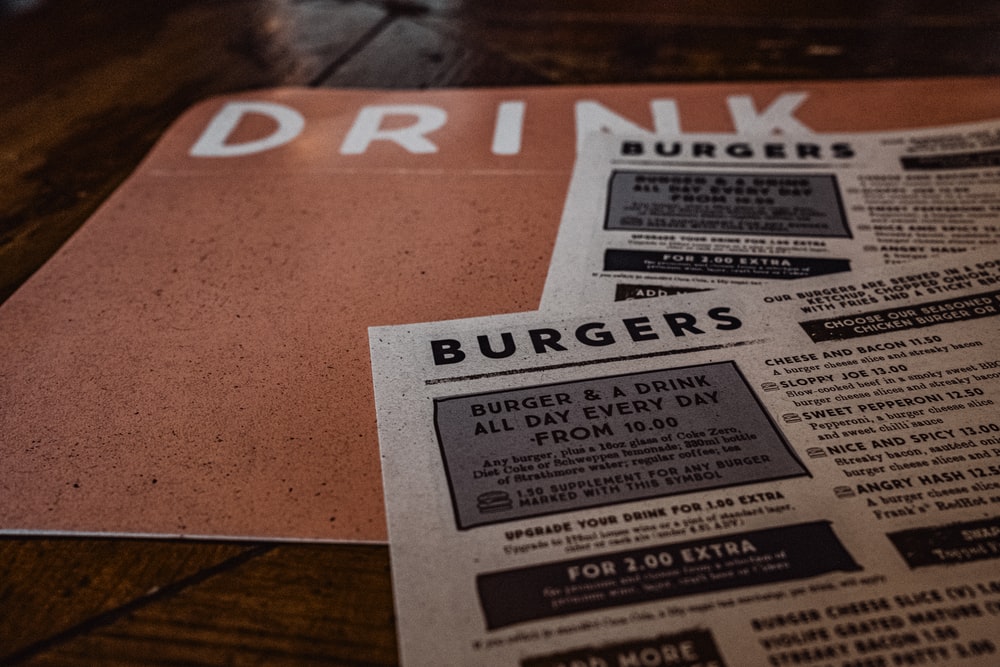 ??Unique burger menu
??Unique burger menu
7. Use of Symbols And Icons
Symbols and icons have been found to assist direct attention to things on your menu. In addition, they could be applied to enhance the overall style of the menu and make it easier to understand. The use of a star on a menu lets customers know whether or not an item is particularly good or well-liked by fellow customers.
For vegetarian and vegan menu items, you can utilize symbols instead of writing them out or creating a separate area.
8. Online Menu Design
Having a menu on a restaurant's web page is necessary as online ordering increases. This method increases the number of orders you'll receive, and it can also have a major impact on your profit. Customers who order food through a restaurant's website report spending an average of 20% more than they do while dining in.
Your online menu must resemble the menu you offer out to customers at your restaurant. Some visitors may be unable to access a pdf version of your menu because of the design of your website. You should develop a menu that can be accessed immediately from your website, without the need for further downloads or additional clicking.
A web designer can help you build the best and latest structure for the website as you would need to take a different approach than you did with your printed menu. For instance, the usage of white space is vital for website menus because it makes the list of items on the menu more readable.
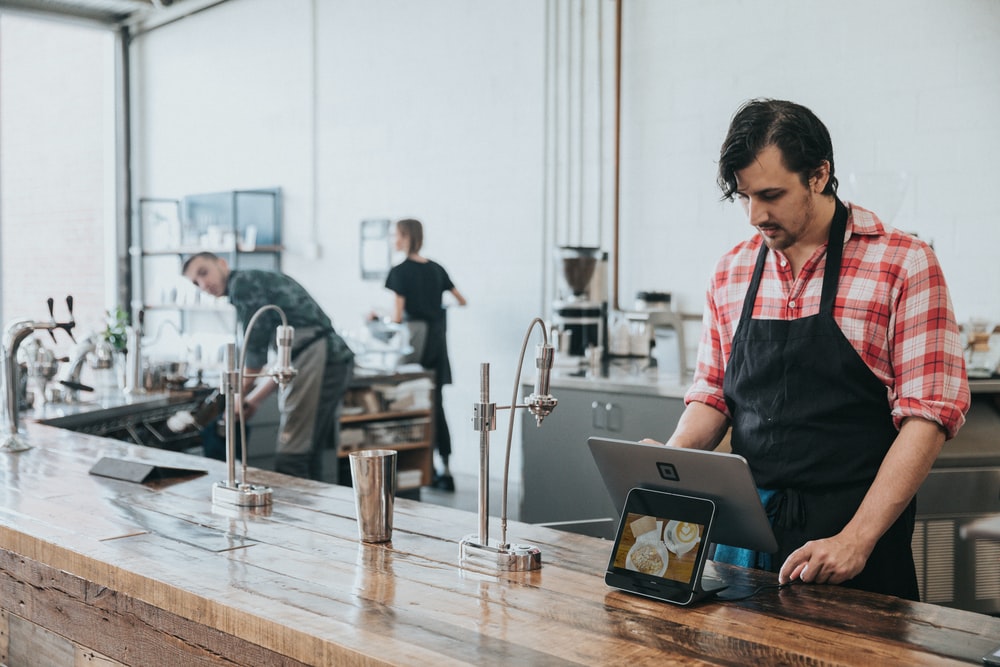 ??High tech coffee POS
??High tech coffee POS
Are You Interested In Enhancing Your Menu?
If you or someone you know is looking to change their restaurant's menu to be more effective, adopting technological solutions is an excellent way. Restaurant owners looking to go down that path should check out MenuCRM. MenuCRM is a restaurant online ordering website and the best restaurant POS system that allows customers to place orders online.
Restaurants can use it to improve the online ordering experience for their consumers by using this software. In addition, restaurants can utilize this software for restaurant menus online, allowing customers to place orders. It also offers restaurants a customer loyalty program that can help them increase their digital customer ordering.
Customer relationship management (CRM) capabilities incorporated within the company's point-of-sale (POS) software give businesses the data they need to better understand and serve their consumers. The software has unique capabilities that enable restaurants to interact with their consumers and build a relationship that can help them with their customer retention strategies.
They can use the software's numerous channels to achieve this, such as sending newsletters, email promos, and push notifications. Sign up for our demo to test the software or chat with us to understand how our restaurant online ordering software can benefit you.